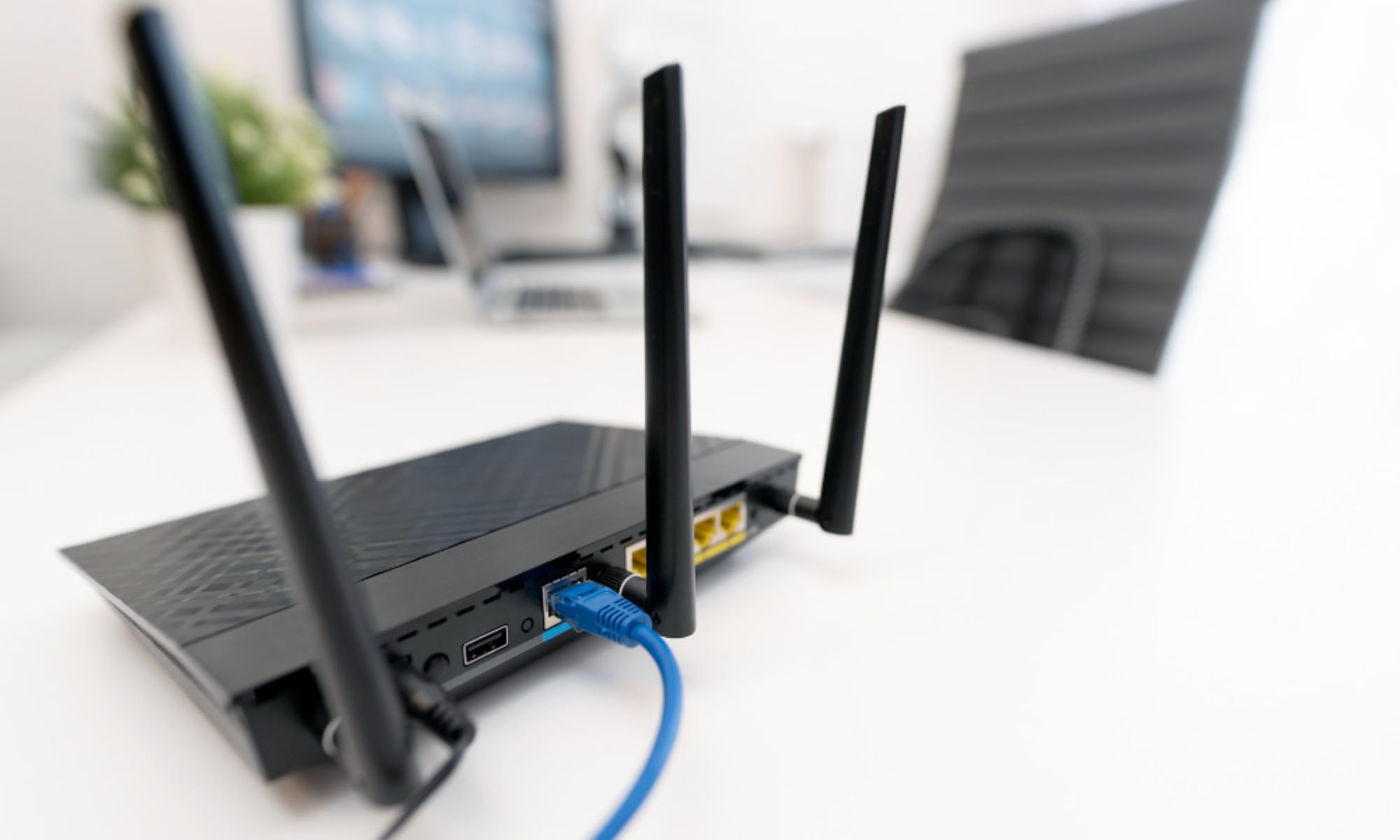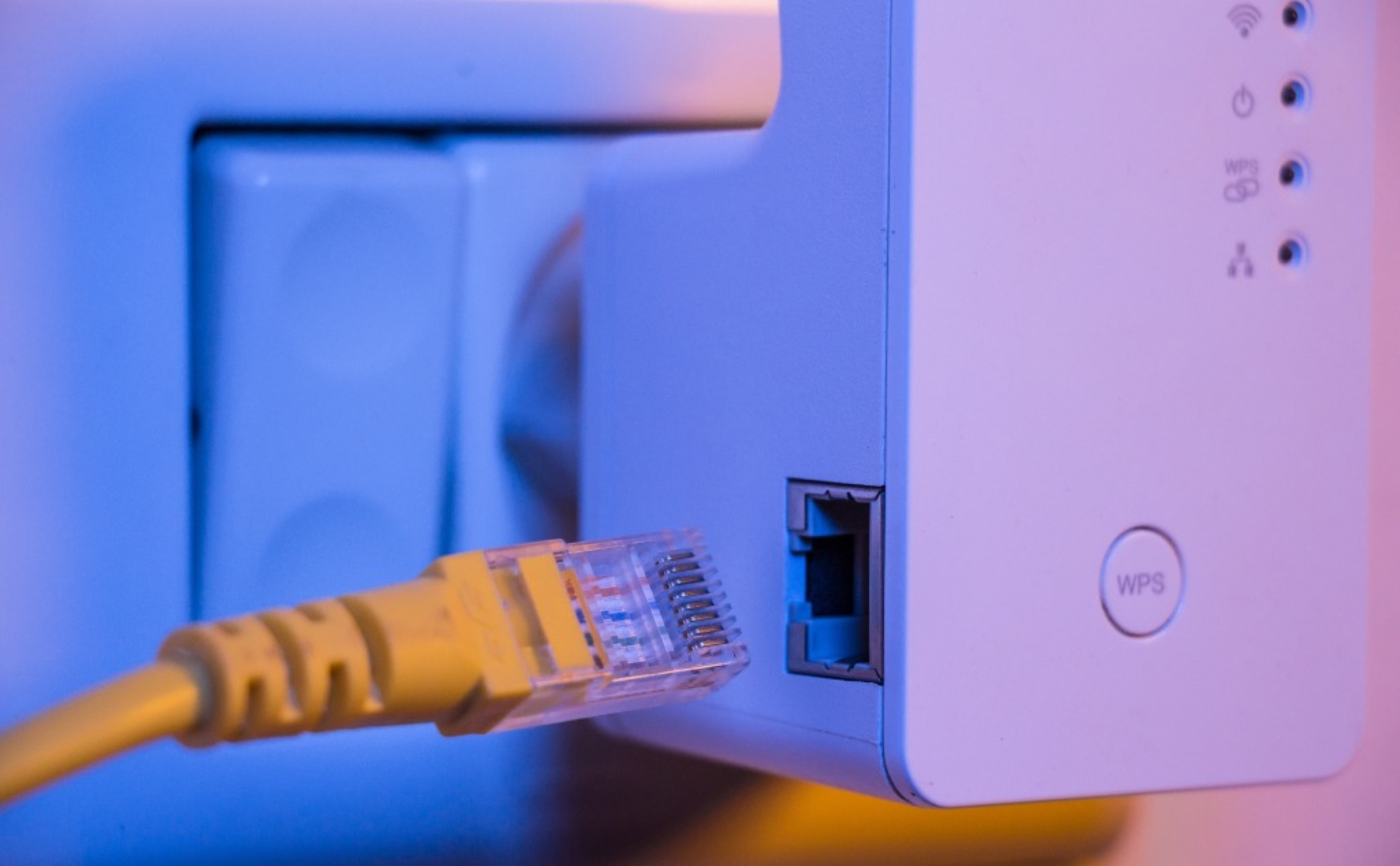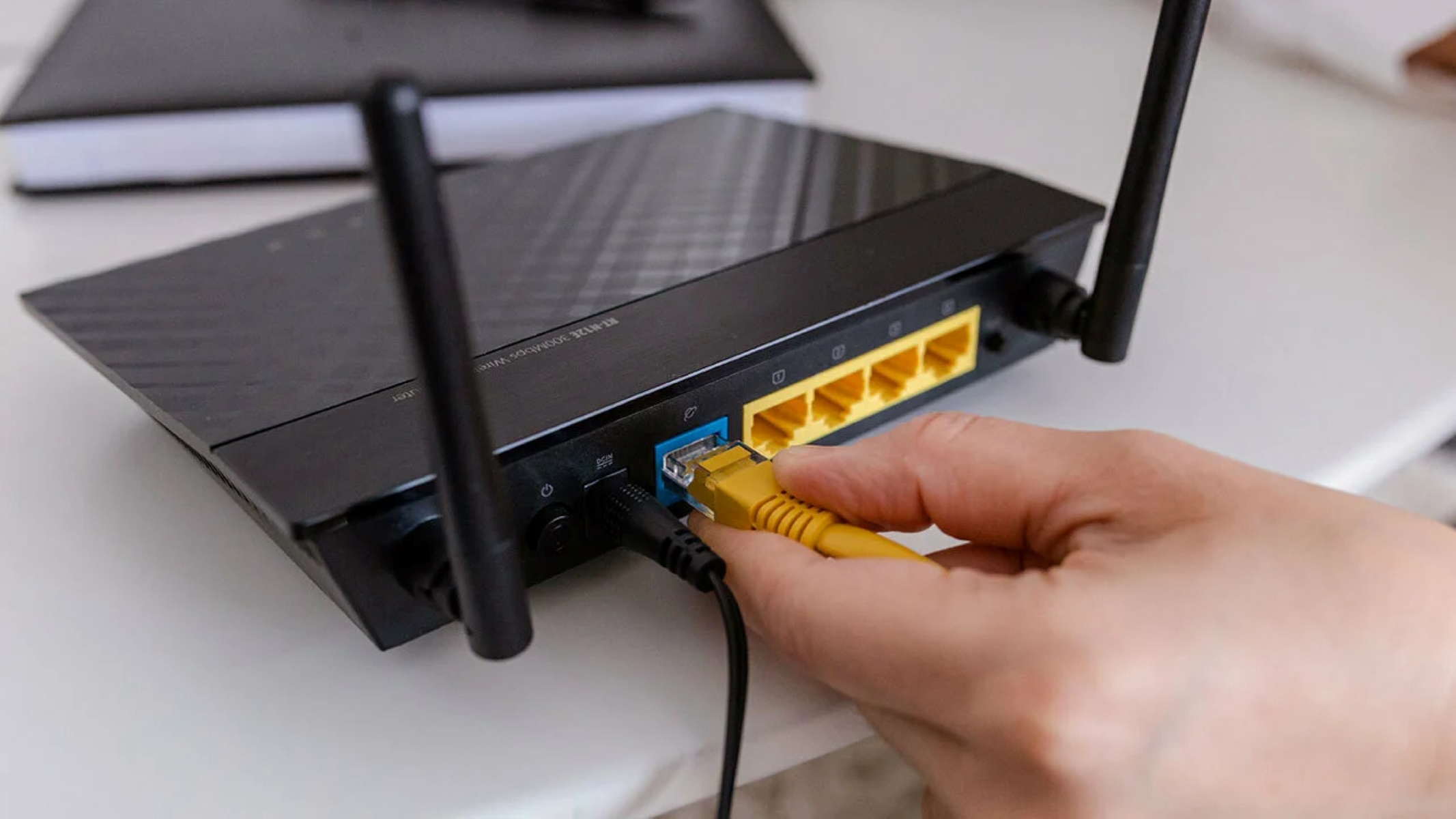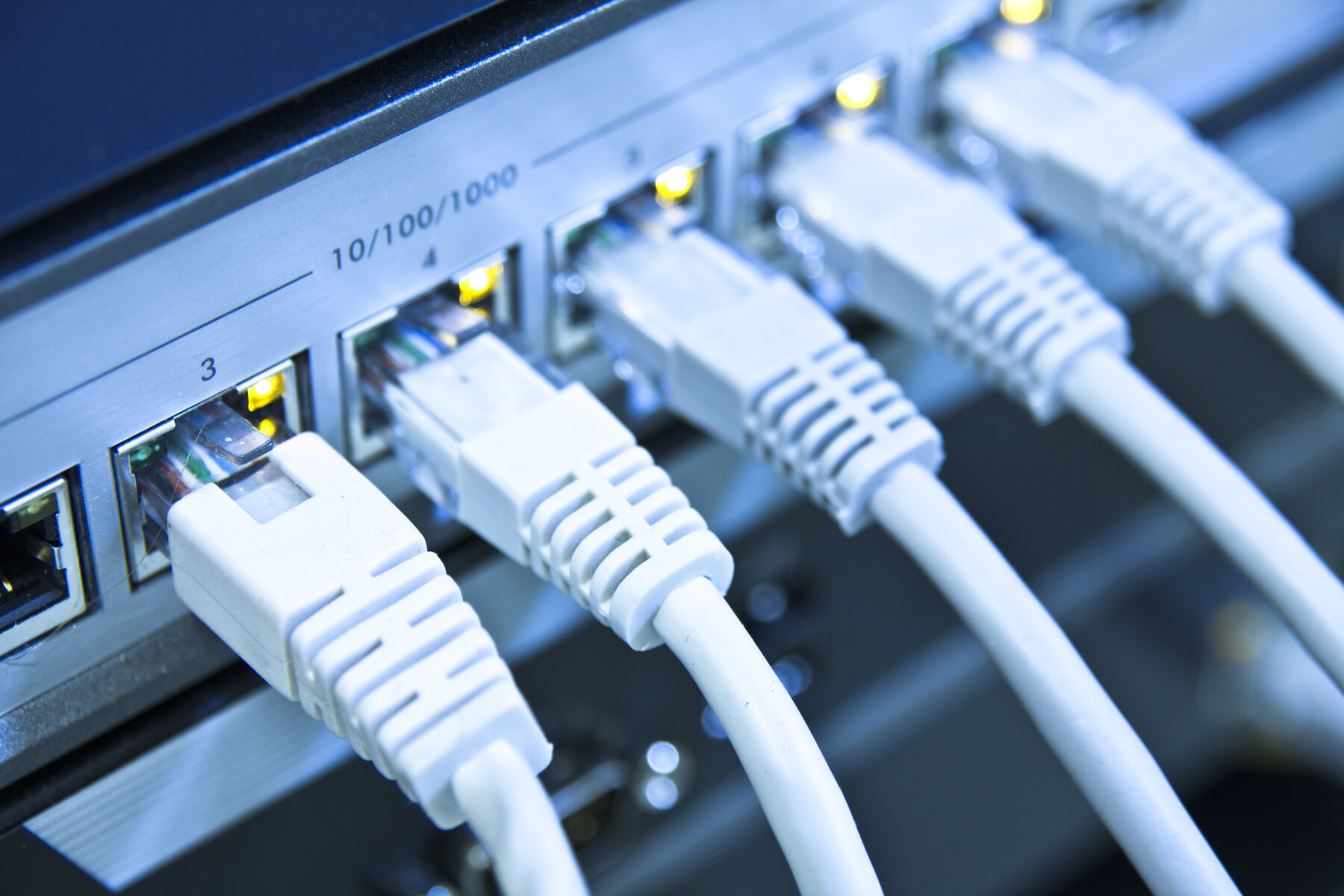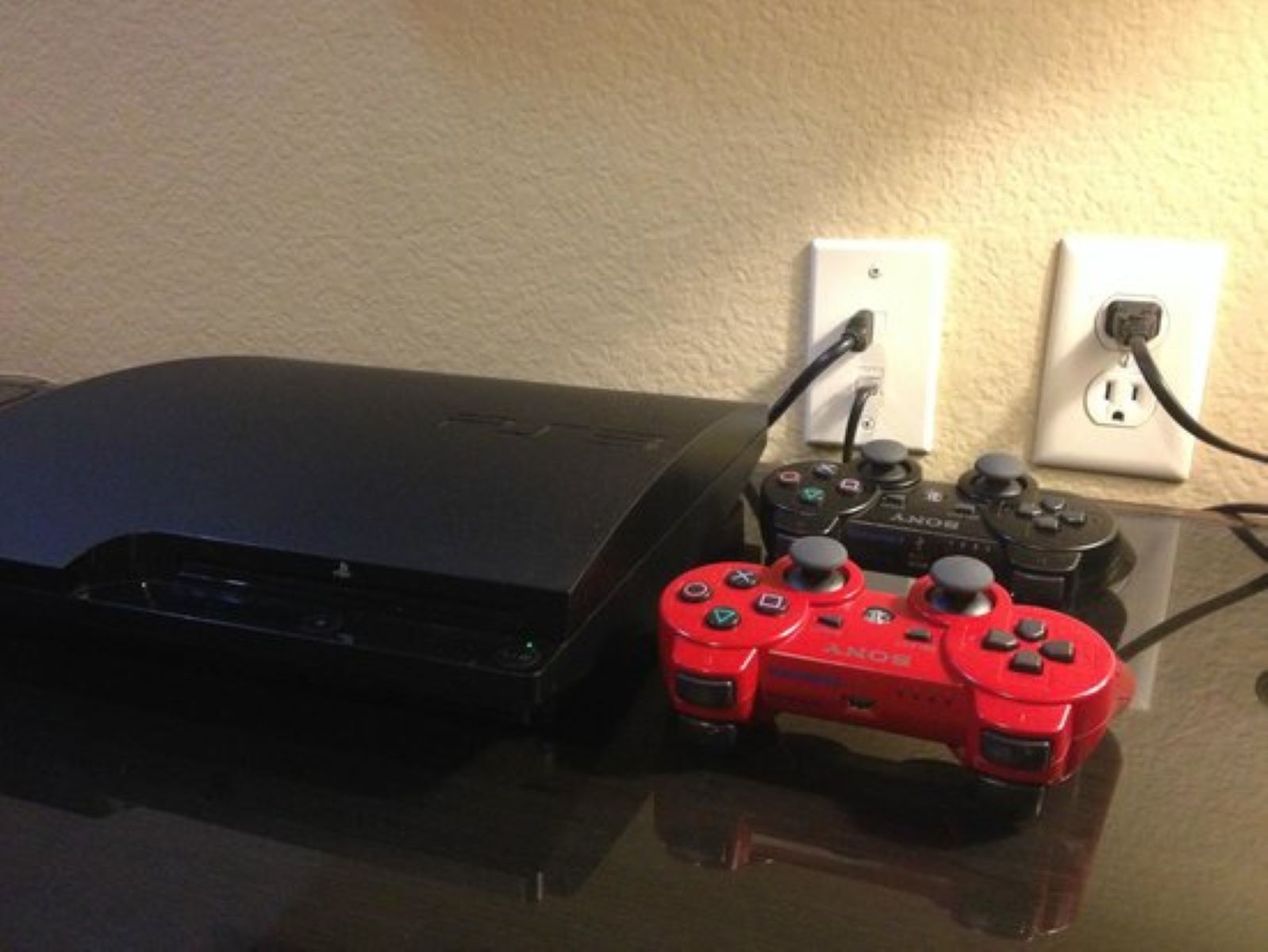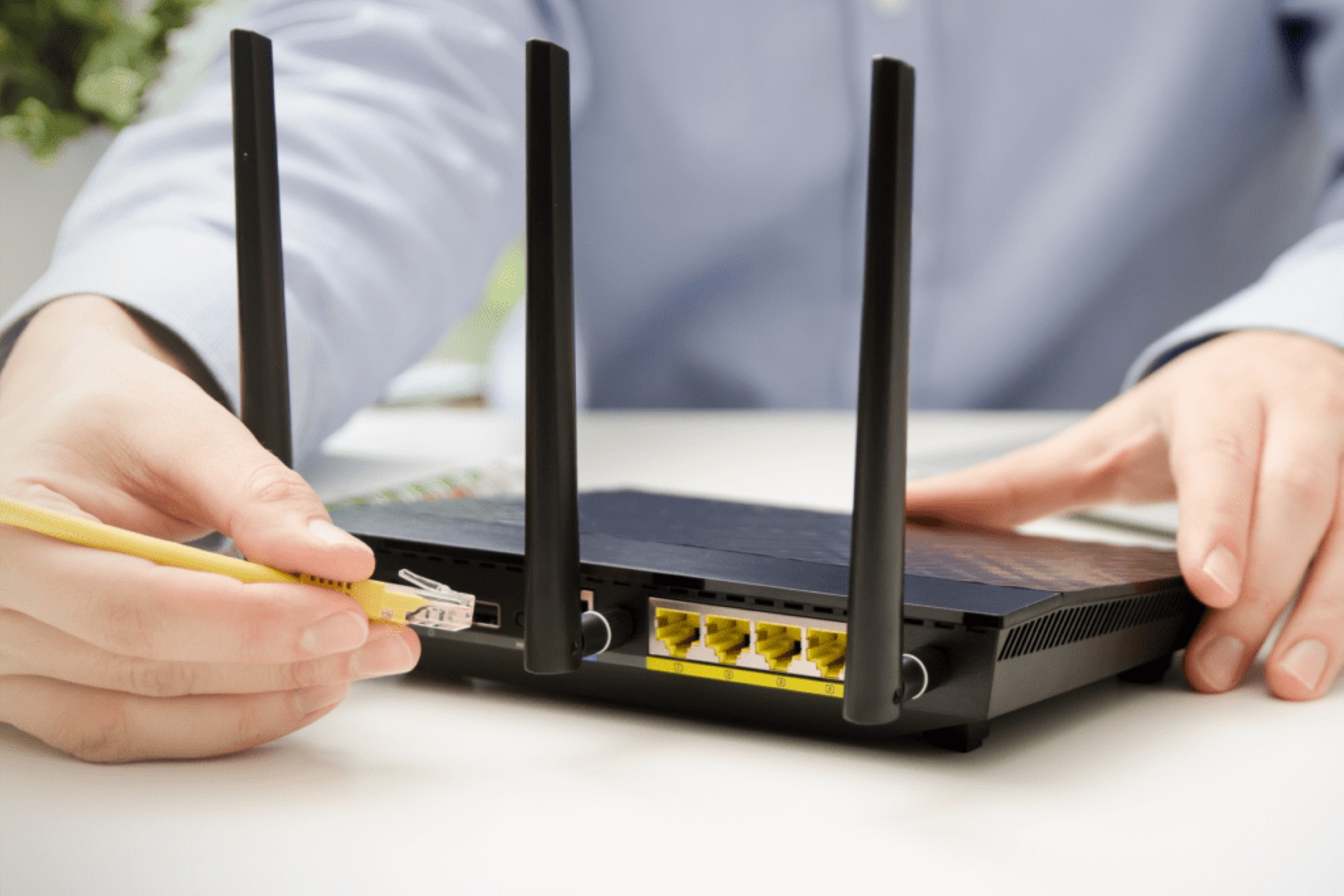Introduction
Connecting an Ethernet cable to your router is a fundamental step in setting up a stable and reliable internet connection. Whether you are a tech enthusiast or a casual user, understanding how to connect an Ethernet cable to your router is essential for maximizing your internet speed and ensuring a seamless online experience.
While wireless connections have become increasingly popular, Ethernet connections offer several advantages, such as faster and more stable internet speeds, lower latency, and secure connections. Ethernet cables are especially useful for activities that require high bandwidth, such as online gaming, video streaming, and large file transfers.
In this guide, we will explore the process of connecting an Ethernet cable to your router. We will discuss the importance of Ethernet connections and highlight the benefits they offer. Additionally, we will provide step-by-step instructions on finding the Ethernet ports on your router and connecting the cable securely. We will also address common issues that may arise during the process and provide troubleshooting tips to help you resolve them.
Whether you are setting up a new router, troubleshooting connectivity issues, or looking to improve your internet speed, this guide will serve as a comprehensive resource to assist you in successfully connecting an Ethernet cable to your router.
So, let’s dive in and explore the world of Ethernet connections and how you can leverage them to enhance your internet experience.
Why do you need to connect an Ethernet cable to your router?
While wireless connections have gained popularity, there are several compelling reasons why you should consider connecting an Ethernet cable to your router:
1. Faster and more stable internet speeds: Ethernet connections offer faster and more consistent internet speeds compared to wireless connections. This is especially important for bandwidth-intensive activities like online gaming, video streaming, and large file downloads. With an Ethernet connection, you can enjoy lag-free gaming sessions and smooth streaming of high-definition content.
2. Lower latency: Ethernet cables provide lower latency or lag compared to wireless connections. This is crucial for various real-time applications like gaming and video conferencing. A lower latency connection ensures faster response times and a more seamless experience overall.
3. Secure and reliable: Ethernet connections are generally considered more secure than wireless connections. Wireless networks can be susceptible to unauthorized access and interference, while Ethernet connections provide a more direct and secure link between your device and the router. This is especially important when sharing sensitive information or conducting online transactions.
4. Minimal interference: Ethernet connections are not subject to the same interference issues as wireless connections. Wireless networks can be affected by obstacles, distance, and other wireless devices in the vicinity, leading to signal degradation. With an Ethernet connection, you can eliminate these potential interference problems and maintain a consistent and reliable internet connection.
5. Flexibility and scalability: Ethernet connections offer greater flexibility in terms of network layout and scalability. You can easily extend your network by connecting additional devices through Ethernet ports on your router or using Ethernet switches. This is particularly useful for home or office setups that require multiple wired devices.
Connecting an Ethernet cable to your router unlocks the full potential of your internet connection, providing faster speeds, lower latency, and enhanced security. Whether for gaming, streaming, or general internet use, an Ethernet connection offers a reliable and robust solution.
By utilizing an Ethernet cable, you can create a solid foundation for your network and enjoy a smooth and uninterrupted online experience. So, let’s proceed to the next section to find out where to locate the Ethernet ports on your router and how to connect your cable securely.
Finding the Ethernet ports on your router
Locating the Ethernet ports on your router is the first step towards connecting an Ethernet cable. Ethernet ports are typically found on the back or sides of the router and are labeled for easy identification. Here’s how you can find the Ethernet ports on your router:
1. Check the back panel: Most routers have a row of Ethernet ports on the back panel. Look for a series of labeled ports, usually numbered from 1 to 4 or more. These ports are specifically designed to connect Ethernet cables.
2. Inspect the side panels: Some routers may have Ethernet ports on the side panels, so it’s worth checking all sides of your router. Look for any labeled Ethernet ports that may be present.
3. Refer to the user manual: If you’re having trouble locating the Ethernet ports on your router, consult the user manual or documentation that came with your router. The manual will provide detailed information on the physical layout of your specific model, including the location of Ethernet ports.
4. Look for color-coded ports: In some cases, Ethernet ports may be color-coded to differentiate them from other ports on the router. Check if any of the ports have a different color or labeling, indicating that they are Ethernet ports.
Once you have identified the Ethernet ports on your router, make a note of their location and the corresponding port numbers. This information will be helpful when connecting your Ethernet cable.
Remember that the number of Ethernet ports on a router can vary depending on the model and manufacturer. Some routers may have only one or two ports, while others may have multiple ports to accommodate multiple wired devices.
It’s worth noting that newer routers may also feature upgraded Ethernet ports, such as Gigabit Ethernet, which offer even faster transfer speeds. These ports are often labeled with “Gigabit” or “GbE” to signify their higher performance.
Now that you have successfully located the Ethernet ports on your router, let’s move on to the next section to learn how to connect an Ethernet cable securely.
Connecting an Ethernet cable to your router
Now that you have located the Ethernet ports on your router, it’s time to connect an Ethernet cable and establish a wired connection. Follow these step-by-step instructions to connect your Ethernet cable securely:
1. Power off your router: Before connecting the Ethernet cable, it’s a good practice to power off your router. This prevents any potential electrical surges or accidental changes to the router settings during the connection process.
2. Identify the Ethernet cable: Ensure that you have an Ethernet cable ready for the connection. Ethernet cables have a distinctive RJ-45 connector on each end, which resembles a larger version of a telephone connector.
3. Insert one end of the Ethernet cable: Take one end of the Ethernet cable and carefully insert it into one of the available Ethernet ports on the router. The connector should fit snugly into the port without any force. Make sure to align the connector properly with the port.
4. Connect the other end of the Ethernet cable: Take the opposite end of the Ethernet cable and connect it to the Ethernet port on your device. This can be a computer, gaming console, smart TV, or any other device that supports a wired connection. Again, ensure a proper alignment and gentle insertion of the cable into the port.
5. Power on your router: Once both ends of the Ethernet cable are securely connected, you can power on your router. Allow some time for the router to initialize and establish the wired connection.
6. Check the connection status: After the router is powered on, check the connection status on your device. Look for the Ethernet icon in the system tray or network settings. It should indicate a successful connection. You may also need to disable any existing Wi-Fi connections on your device to ensure it is using the Ethernet connection.
That’s it! You have successfully connected an Ethernet cable to your router. With the wired connection established, you can now enjoy faster internet speeds, lower latency, and a more reliable online experience.
If you have multiple Ethernet ports on your router, you can connect additional devices using separate Ethernet cables. Simply repeat the above steps for each device, ensuring a secure and proper connection for each cable.
In the event that you experience any connectivity issues or the Ethernet connection is not working, refer to the troubleshooting section in the next part of this guide.
Now that you know how to connect an Ethernet cable to your router, let’s move on to the next section to troubleshoot common issues that may arise with Ethernet connectivity.
Troubleshooting common issues with Ethernet connectivity
While connecting an Ethernet cable to your router is usually a straightforward process, there are times when you may encounter issues with the Ethernet connectivity. Here are some common problems you may encounter and troubleshooting steps to resolve them:
1. No connection: If your device doesn’t establish a connection with the Ethernet cable, start by checking the cable itself. Ensure that it is not damaged or bent. Try using a different Ethernet cable to rule out any possible cable issues. Also, ensure that both ends of the cable are securely connected to the router and device.
2. No internet access: If you have connected the Ethernet cable but are unable to access the internet, verify that your router is properly connected to the internet source, such as a modem or DSL line. Check the lights on the router to ensure the connection is active. You may also need to restart your router and modem.
3. Slow speeds: If you are experiencing slow internet speeds despite having a successful Ethernet connection, check the speed of your internet plan and compare it to the actual speeds you’re receiving. There may be other factors affecting your speeds, such as network congestion or issues with your service provider. Contact your provider for assistance.
4. IP address conflicts: Occasionally, devices may face IP address conflicts when connected via Ethernet. This can cause connectivity issues. To resolve this, restart your router, which will assign new IP addresses to connected devices. You can also manually release and renew the IP address on your device’s network settings.
5. Firewall blocking connection: If your device’s firewall settings are too strict, they may block the Ethernet connection. Adjust your firewall settings to allow the connection or temporarily disable the firewall to test the connection.
6. Outdated network drivers: Ensure that your device’s network drivers are up to date. Outdated drivers can cause connectivity problems. Visit the manufacturer’s website to download and install the latest drivers for your network card.
If you have tried the above troubleshooting steps and are still experiencing issues with Ethernet connectivity, it may be helpful to consult your router’s user manual for additional troubleshooting guidance or contact your internet service provider for further assistance.
By identifying and addressing common Ethernet connectivity issues, you can ensure a smooth and reliable wired connection for your devices.
Now that we’ve covered troubleshooting tips, it’s time to wrap up this guide on connecting an Ethernet cable to your router.
Conclusion
Connecting an Ethernet cable to your router is a simple yet essential step for creating a stable and fast internet connection. By utilizing an Ethernet connection, you can enjoy faster speeds, lower latency, and enhanced reliability for activities such as online gaming, streaming, and large file transfers.
In this guide, we discussed why connecting an Ethernet cable to your router is beneficial. Ethernet connections offer faster speeds, lower latency, and increased security compared to wireless connections. We also covered how to locate the Ethernet ports on your router and provided step-by-step instructions on connecting an Ethernet cable securely.
If you encounter any issues with Ethernet connectivity, we provided troubleshooting tips to help you resolve common problems. From cable and connection issues to IP address conflicts and firewall settings, we addressed several potential obstacles you may encounter while setting up your Ethernet connection.
Remember to always ensure secure connections, properly insert the Ethernet cable into the ports, and check the connection status on your device. If you experience persistent issues, refer to the user manual or contact your internet service provider for further assistance.
By following the steps outlined in this guide and troubleshooting any potential problems, you can establish a reliable and high-speed Ethernet connection to maximize your internet experience.
Now that you have a good understanding of how to connect an Ethernet cable to your router, go ahead and enjoy the benefits of a stable and lightning-fast internet connection. Whether you’re gaming, streaming, or simply browsing the web, a wired Ethernet connection will provide you with the best possible experience.







